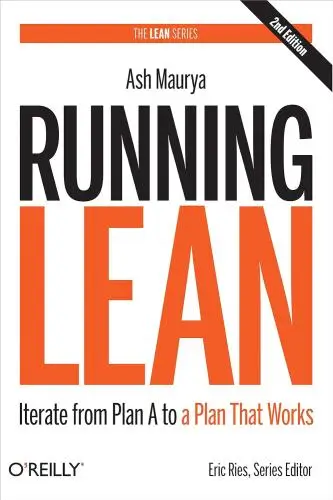
Running Lean
Iterate from Plan A to a Plan That Works
What's it about?
Running Lean by Ash Maurya is a practical guide for entrepreneurs who want to develop products that customers truly need. This book dives deep into the Lean Startup methodology, offering a systematic approach to building a successful startup. Maurya emphasizes the importance of validating your idea through early customer feedback, thus saving time and resources by focusing on what truly matters. Running Lean is an indispensable roadmap for navigating the often-turbulent journey from initial idea to market-ready product, making it a must-read for aspiring entrepreneurs and innovators.
About the Author
Ash Maurya is an entrepreneur and author, best known for his work on lean startups. His notable books include "Running Lean" and "Scaling Lean," which focus on creating startup success through iterative product development and customer feedback. Maurya's writing emphasizes practical strategies for validating business ideas efficiently.
10 Key Ideas of Running Lean
Identify Your Problem/Solution Fit Through Continuous Validation
Problem Statement:
Many entrepreneurs invest time and resources into developing products without ensuring there is a genuine need in the market for those products.
This often leads to failed ventures and wasted resources.Proposed Solution:
To address this issue, entrepreneurs should engage with their target audience early and continuously validate their product ideas.
By gathering feedback and iterating on their solutions based on this feedback, entrepreneurs can ensure that their products meet genuine market needs before significant investments are made.Continuous Validation Approach:
- Early Engagement:
Start by engaging with potential customers as early as possible, even before the product is fully developed.
This can be done through surveys, interviews, or focus groups. - Gather Feedback:
Actively seek feedback from your target audience at every stage of product development.
This feedback can help identify areas for improvement and ensure alignment with customer needs. - Iterate Based on Feedback:
Use the feedback gathered to make iterative changes to your product.
This may involve tweaking features, adjusting pricing, or pivoting the overall product concept. - Test and Validate:
Test your product with a limited group of users to see how they interact with it and gather additional feedback.
Iterate further based on these insights. - Monitor Metrics:
Track key metrics related to user engagement, satisfaction, and retention to gauge the success of your product.
Use data to inform further iterations. - Pivot if Necessary:
Be open to pivoting your product if the feedback suggests a significant change is needed to better serve your target audience.
Key Benefits of Continuous Validation:
- Risk Mitigation:
Reduce the risk of investing in a product that doesn't meet market needs by validating assumptions early. - Customer-Centric Design:
Ensure that your product is designed with the customer in mind, leading to higher satisfaction and retention. - Efficiency:
Save time and resources by making informed decisions based on user feedback rather than guesswork.
By following a continuous validation approach, entrepreneurs can increase the chances of product success by ensuring a solid product-market fit before fully committing to product development and launch.
Learn DeeperIdentify a Clear Problem: Start by pinpointing a specific problem that you or people in your target market are facing. This should be something that is not currently being solved effectively by existing solutions.
Develop a Hypothetical Solution: Based on the problem identified, brainstorm a solution that could potentially solve this problem. It doesn't have to be perfect or fully fleshed out at this stage.
Engage with Potential Customers: Reach out to individuals who are facing the problem you've identified. This can be done through surveys, interviews, or social media engagement. The goal is to gather feedback on whether your perceived problem is genuine and if your proposed solution would be of interest.
Iterate Based on Feedback: Use the feedback gathered to refine your problem statement and solution. This may involve tweaking your solution or even identifying a different problem altogether.
Validate the Solution: Once you have a refined solution, seek validation from your target audience again. This could involve creating a minimal viable product (MVP) and getting it into the hands of potential users for testing.
- Example
If you're aiming to solve the problem of busy professionals not having enough time to cook healthy meals, your initial solution might be a meal prep delivery service. You would then engage with busy professionals to validate both the problem and your proposed solution, iterating based on their feedback.
- Example
For someone looking to address the issue of inefficient water usage in residential homes, an initial solution could be a smart water management system. By engaging with homeowners and gathering feedback, the solution can be refined and validated to ensure it effectively addresses the problem.
- Early Engagement:
Create a Lean Canvas to Map Out Your Business Model
- Problem: Identify the customer problem or need that your product or service addresses.
- Solution: Describe your solution to the problem and how it adds value to customers.
- Unique Value Proposition: Highlight what sets your product or service apart from competitors.
- Customer Segments: Define the target customers or market segments for your offering.
- Channels: List the primary ways you will reach and engage with customers.
- Revenue Streams: Explain how your business will make money and generate revenue.
- Cost Structure: Outline the key expenses and costs associated with running the business.
- Key Metrics: Identify the crucial indicators that will help you track and measure success.
- Unfair Advantage: Describe any unique advantages or barriers to entry that give your business an edge.
- Key Partnerships: List any strategic partners or relationships that are critical to your business.
- Problem Assumptions: Identify assumptions about the customer problem that need validation.
- Solution Assumptions: List assumptions about your solution that require testing or validation.
- Riskiest Assumptions: Highlight the most critical assumptions that could make or break your business idea.
By filling in these sections of the Lean Canvas, you can effectively summarize your business model and gain clarity on the key aspects of your startup idea.
This tool enables you to distill your business concept into a manageable format, fostering better decision-making and strategic planning.
Learn DeeperSketch Your Own Lean Canvas: Grab a piece of paper or use an online template and start filling out each section of the Lean Canvas. Begin with your value proposition, which is the problem you're solving or the need you're fulfilling for your customers.
Identify Your Customer Segments: Think about who your ideal customers are. Are they businesses or consumers? What are their needs and pain points? Write these down in the customer segments section.
Outline Your Channels and Revenue Streams: Consider how you'll reach your customers and how you'll make money. Will you sell directly online, through retailers, or both? What will be your primary source of income - product sales, subscriptions, or something else?
List Your Key Metrics: Determine what metrics or indicators will show that your business is successful. This could be the number of users, subscription rates, or revenue milestones.
Regularly Review and Update Your Lean Canvas: As you learn more about your market and customers, revisit your Lean Canvas. Update it to reflect new insights, which will help you pivot or adjust your strategy as needed.
- Example
Imagine you're launching a subscription-based meal planning service for busy professionals. Your Lean Canvas might highlight a value proposition of saving time and promoting healthy eating, customer segments might include working parents and single professionals, channels could be social media and partnerships with fitness centers, and revenue streams could be monthly subscription fees.
- Example
Consider a tech startup developing a project management tool for remote teams. The value proposition could focus on improving communication and efficiency, customer segments might be small to medium-sized businesses with remote workers, channels could be direct online sales and webinars, and revenue streams could include tiered subscription models based on team size.
Prioritize Building a Minimum Viable Product (MVP)
Focus on developing a Minimum Viable Product (MVP) that includes only the core features necessary to solve the identified problem and satisfy early adopters.
The MVP approach allows you to quickly test your hypotheses with real users, gather feedback, and iterate.
This strategy minimizes the risk of spending time and resources on features or products that do not meet market needs.
Learn DeeperIdentify the Core Problem: Start by clearly defining the problem you are trying to solve. This will help you focus on what features are absolutely necessary for your MVP.
Engage with Potential Users Early: Before you even start building, talk to potential users. Understand their pain points and what solutions they might be looking for. This feedback is invaluable in shaping your MVP.
Build, Measure, Learn: Adopt a cycle of building a small feature set, measuring its impact through user feedback, and learning from the results. Then, iterate based on what you've learned. This keeps your development agile and responsive to user needs.
Prioritize Features Based on Feedback: Use the feedback from your early adopters to prioritize which features to develop next. Focus on what adds the most value to your users, not what seems cool or innovative.
Keep It Simple: Resist the temptation to add more features. Keep your MVP as simple as possible while still solving the core problem. This makes it easier to test hypotheses and iterate.
- Example
A startup aiming to improve personal finance management could start by creating an MVP that simply tracks daily expenses and income, rather than a full-featured app with budgeting, forecasting, and investment advice. Early user feedback might reveal that users are particularly interested in budgeting tools, guiding the next phase of development.
- Example
An online education platform might initially launch with just a handful of courses in a specific subject area to gauge interest and gather feedback on the format and content. This approach allows them to refine their teaching methods and course offerings based on actual user preferences before expanding their curriculum.
Adopt Continuous Deployment for Rapid Learning Cycles
Implement continuous deployment practices to accelerate learning cycles.
By frequently releasing updates to your product, you can quickly gather user feedback and make iterative improvements.
This approach enables you to adapt to user needs and market changes more swiftly, reducing the time and cost associated with traditional release cycles.
Learn DeeperStart Small: Begin by implementing continuous deployment on a small scale. Choose a minor feature or update to release, and use this as a test case to refine your deployment process.
Automate Your Deployment Process: Use tools like Jenkins, Travis CI, or GitHub Actions to automate the steps of your deployment process. This reduces human error and frees up time for more important tasks.
Gather User Feedback Continuously: Set up mechanisms to collect user feedback as soon as you deploy a new update. This can be through in-app surveys, feedback forms, or direct customer outreach.
Iterate Based on Feedback: Use the feedback you gather to make informed decisions about what to improve or change in your next update. Prioritize changes that align with user needs and business goals.
Monitor Performance Metrics: Keep an eye on key performance indicators (KPIs) related to your updates. This could include user engagement metrics, bug reports, or downtime. Use these metrics to guide your continuous improvement efforts.
- Example
A small e-commerce website implements continuous deployment by automatically pushing code changes to their live site every week. They use A/B testing to compare user engagement between the new update and the previous version, allowing them to quickly iterate based on real user data.
- Example
A mobile app development team releases a new feature to 10% of their users to gather feedback before rolling it out to everyone. They use automated deployment tools to manage this process and collect user feedback through in-app surveys. Based on the feedback, they make necessary adjustments and then deploy the improved version to all users.
Use Split Testing to Validate Changes
Employ split testing (A/B testing) to empirically validate changes to your product.
By presenting different versions of your product to similar audiences, you can measure which version performs better in terms of user engagement, conversion rates, or other relevant metrics.
This data-driven approach helps ensure that decisions about product changes are based on actual user behavior rather than assumptions.
Learn DeeperIdentify Key Metrics: Before you start split testing, pinpoint the key metrics that matter most to your product's success. This could be anything from user sign-ups, time spent on your platform, to purchase rates. Knowing what you're measuring is crucial.
Create Two Versions: Design two versions (A and B) of the element you want to test. This could be a landing page, a feature within your app, or even an email campaign. Ensure the variations are distinct enough to measure but not so different that you're comparing apples to oranges.
Use Split Testing Tools: Leverage tools like Google Optimize, Optimizely, or VWO for your split testing. These platforms can help you distribute your versions evenly among your audience and collect data on their performance.
Analyze and Implement: After running the test for a significant amount of time, analyze the results. Look for statistically significant differences in performance between the two versions. Implement the winning version as the default, but don't stop there. Use the insights gained to inform future tests and continuous improvement.
- Example
Imagine you run an e-commerce site and you're unsure if adding customer reviews on product pages will increase sales. You create two versions of a product page: Version A (without customer reviews) and Version B (with customer reviews). By directing half of your traffic to each version, you can measure which one results in higher sales or engagement, thus making an informed decision based on actual user behavior.
- Example
Suppose you have an email newsletter and you're trying to improve open rates. You decide to test two different subject lines: Version A uses a straightforward approach ('This Week's News Digest'), while Version B uses a more intriguing, question-based approach ('Can You Guess What Changed This Week?'). By sending each version to a portion of your subscriber list, you can track which subject line generates a higher open rate, guiding your strategy for future emails.
Deeper knowledge. Personal growth. Unlocked.
Unlock this book's key ideas and 15M+ more. Learn with quick, impactful summaries.
Read Full SummarySign up and read for free!
Running Lean Summary: Common Questions
"When in doubt, zoom out." - Ash Maurya, Running Lean
Running Lean is a practical guide for creating successful startups by focusing on validated learning, experimentation, and iteration. Maurya introduces the concept of Lean Startup methodology and breaks down the process into actionable steps like problem-solution fit, product-market fit, and scaling. The emphasis on continuous feedback loops and making data-driven decisions is what sets this book apart.
While reading Running Lean, I found myself constantly intrigued by the real-life examples and case studies that reinforced the principles being discussed. Maurya's approach of cutting out waste and prioritizing learning resonated with me, making it a compelling read for anyone looking to launch a startup or improve an existing one. If you're a fan of The Lean Startup by Eric Ries or Sprint by Jake Knapp, you'll appreciate the insights shared in this book.
Experience Personalized Book Summaries, Today!
Discover a new way to gain knowledge, and save time.
Sign up for our 7-day trial now.
No Credit Card Needed
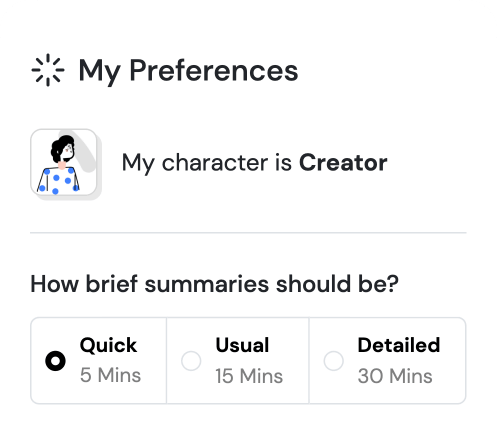
Similar Books
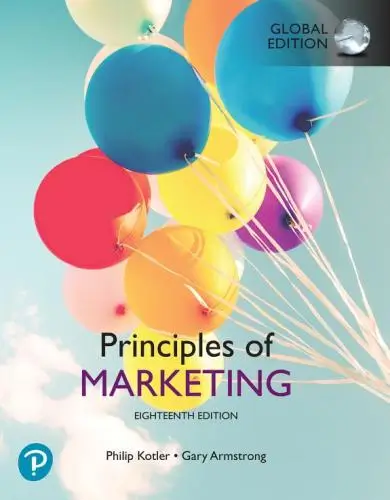
Principles of Marketing, Global Edition
Gary Armstrong
The 100 Best Business Books of All Time
Jack Covert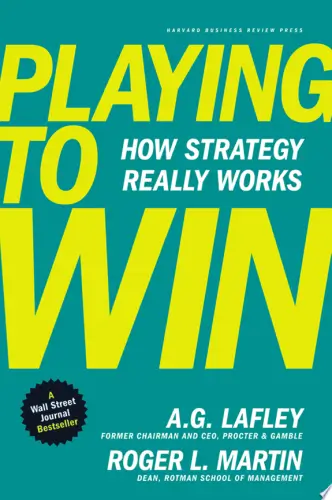
Playing to Win
A.G. Lafley
Productize
Eisha Armstrong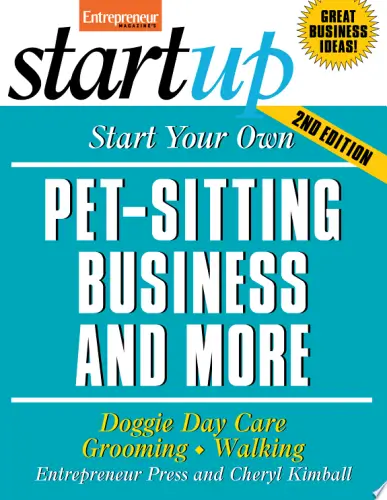
Start Your Own Pet-Sitting Business and More
Entrepreneur Press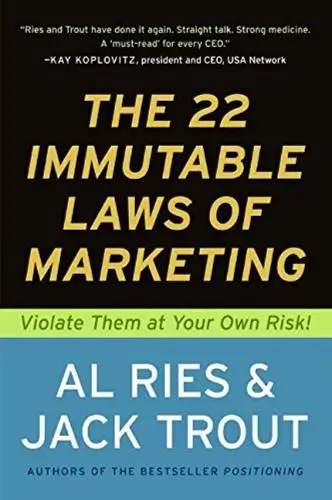
The 22 Immutable Laws of Marketing
Al Ries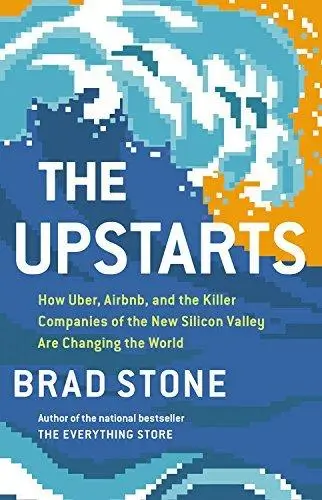
The Upstarts
Brad Stone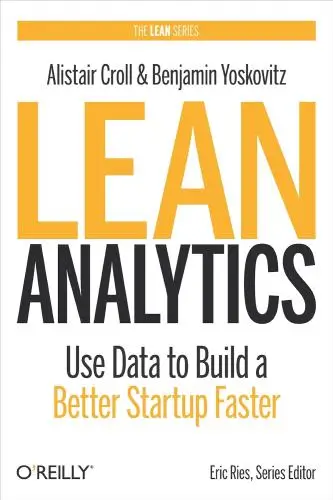
Lean Analytics
Alistair Croll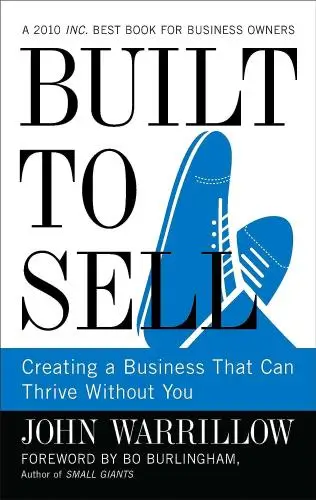
Built to Sell
John Warrillow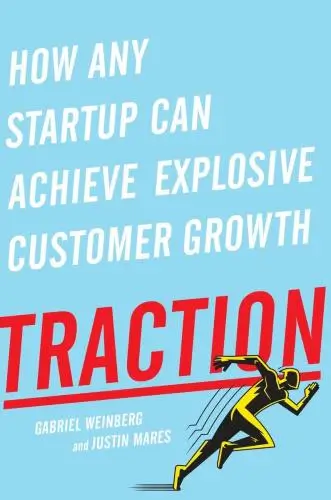
Traction
Gabriel WeinbergTrending Summaries
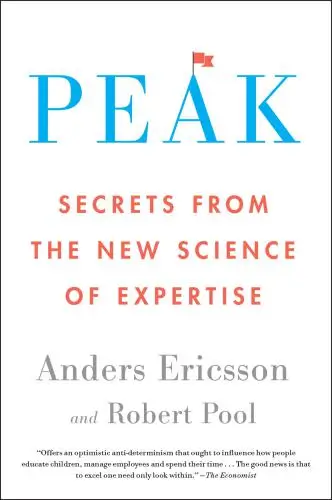
Peak
Anders Ericsson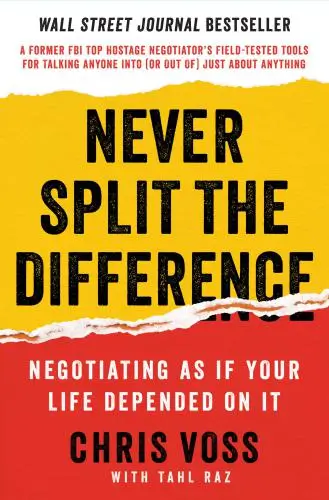
Never Split the Difference
Chris Voss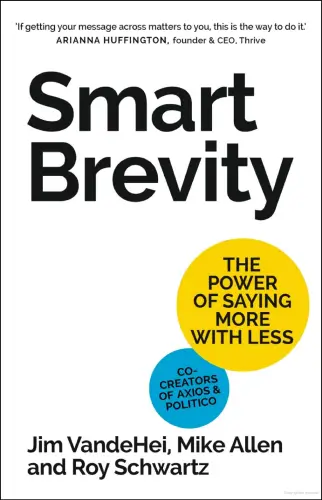
Smart Brevity
Jim VandeHei
The Psychology of Money
Morgan Housel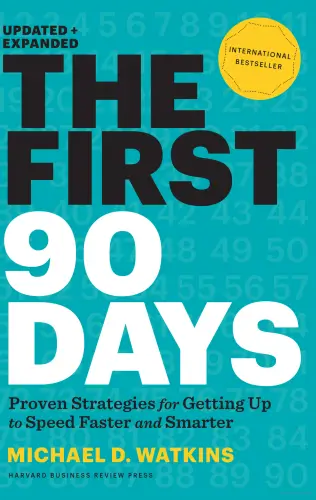
The First 90 Days
Michael D. Watkins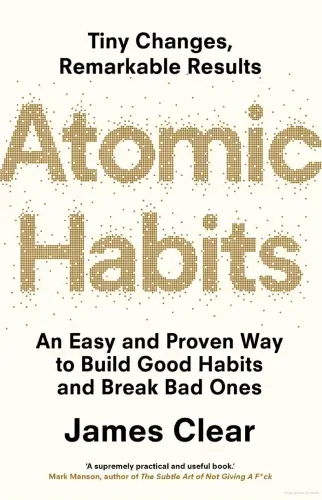
Atomic Habits
James Clear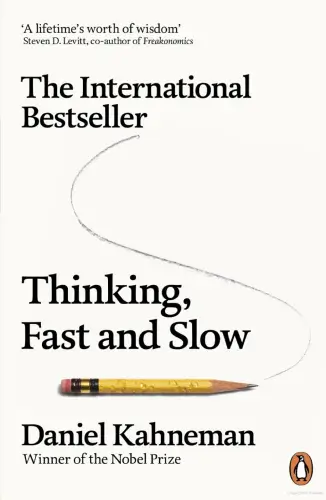
Thinking, Fast and Slow
Daniel Kahneman
The Body Keeps the Score
Bessel van der Kolk M.D.
The Power of Regret
Daniel H. Pink
The Compound Effect
Darren HardyNew Books

A Candle for Kiri
Edna Mae Holm
Principles of Marketing, Global Edition
Gary Armstrong
Serpent Rising: The Kundalini Compendium
Neven Paar
Feeling Is the Secret
Neville Goddard
The 100 Best Business Books of All Time
Jack Covert
My Oxford Year
Julia Whelan
Trading in the Zone
Mark Douglas
Mathematics for Machine Learning
Marc Peter Deisenroth
The Creative Act
Rick Rubin
